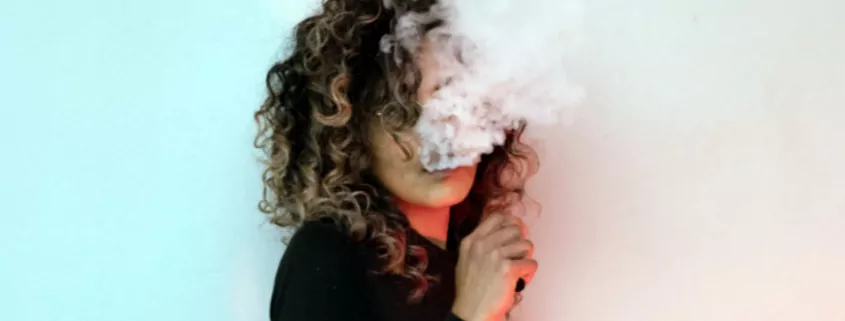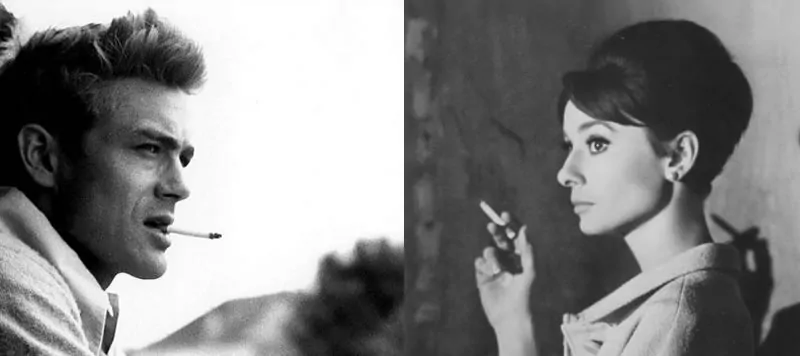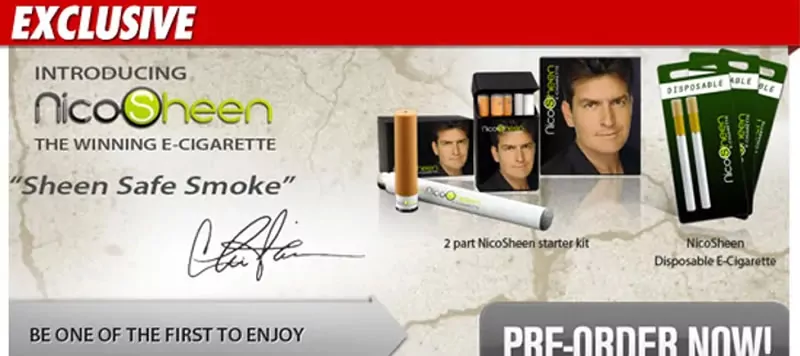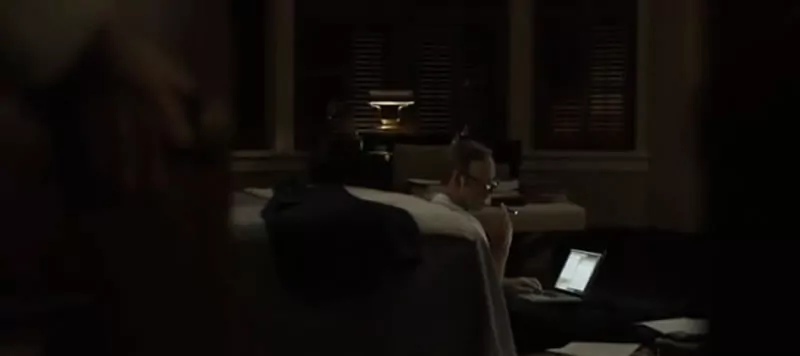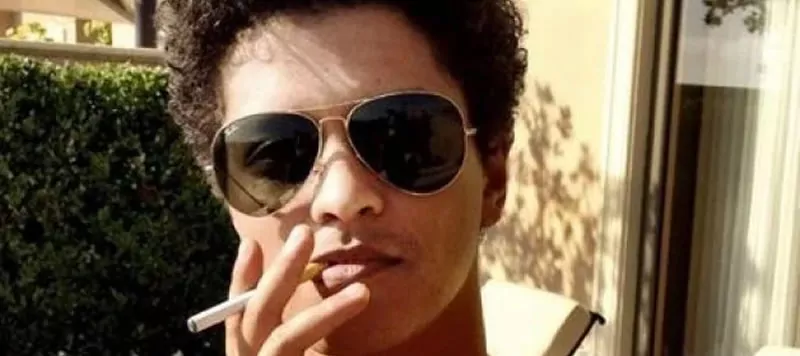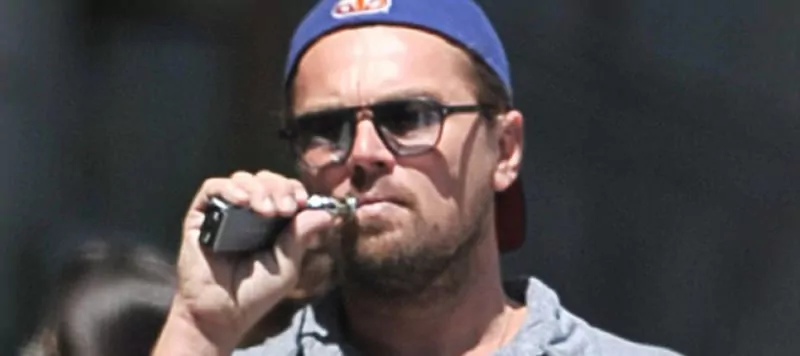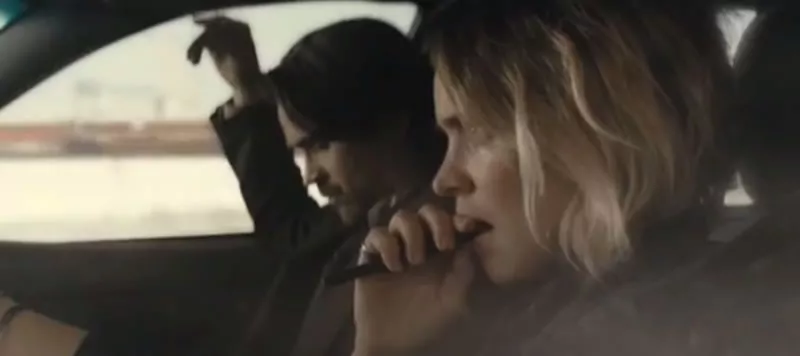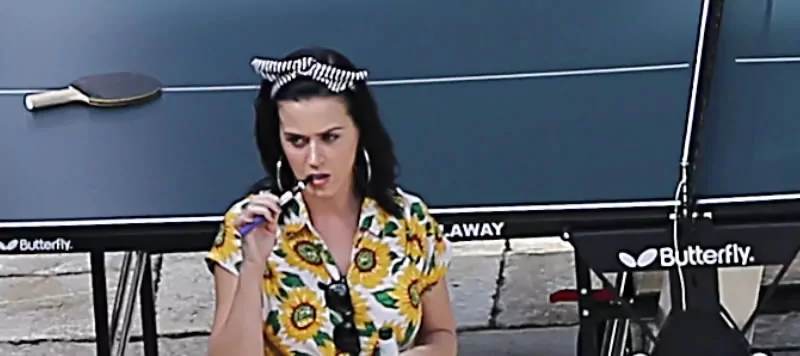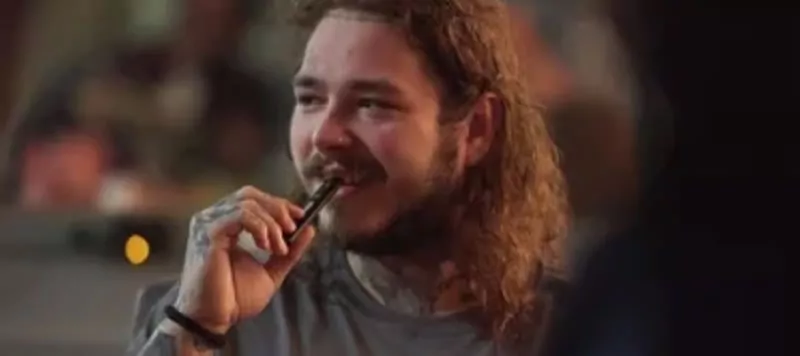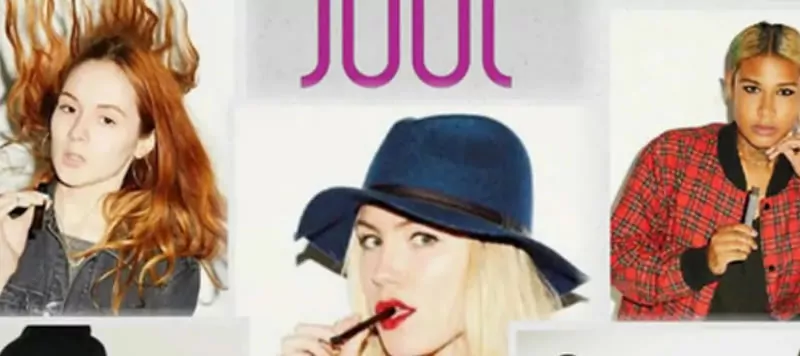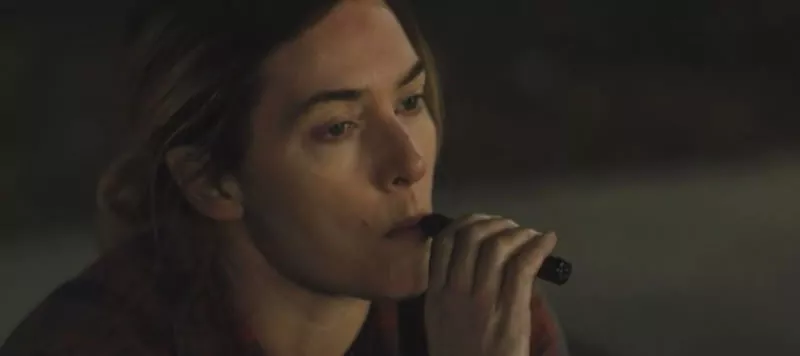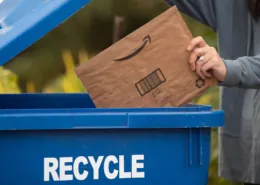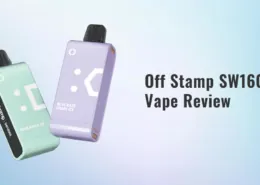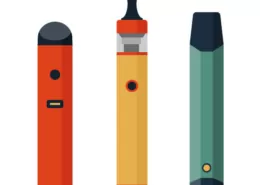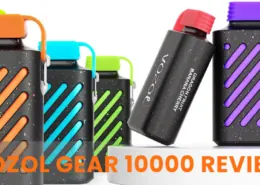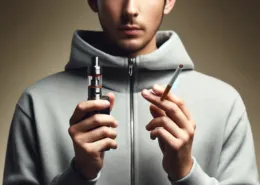Timeline: The Evolution of Vaping in Global Pop Culture
Vaping has undergone a remarkable transformation in pop culture, evolving from a niche habit to a mainstream lifestyle statement. This timeline explores the key moments and trends that have shaped the perception and popularity of vaping in entertainment and society.
Early 2000s: Emergence of the E-Cigarette (2003–2009)
- 2003 – The Birth of Modern Vaping: Chinese pharmacist Hon Lik invents the first commercially successful e-cigarette, offering a “smoke-free” nicotine delivery system. By 2006, e-cigarettes had entered markets in Europe and the U.S., pitched as a less harmful, hi-tech alternative to smoking. At this stage, vaping was a niche novelty and had virtually no presence in films, music, or mainstream media. Traditional smoking still reigned in pop culture – think James Dean’s iconic cigarette or Audrey Hepburn’s elegant holder – symbolizing rebellion and coolness in classic Hollywood. Early e-cigs, by contrast, were unfamiliar gadgets, used mostly by committed smokers seeking to quit or reduce harm.
- Mid-2000s – Under the Radar: In the late 2000s, a handful of celebrities and early adopters began experimenting with “smokeless” electronic cigarettes, but these instances were largely out of the public eye. Smoking imagery was actually on the decline in media due to health concerns, and e-cigarettes had yet to make their mark on screen. Companies like Ruyan and Blu introduced e-cig models, and by 2009 Blu aired some of the first TV ads featuring e-cigs (notably with actor Stephen Dorff a bit later in 2012). Still, in this era, vaping was mostly absent from pop culture, with cigarettes remaining the smoking prop of choice in storytelling.
Early 2010s: First Sightings in Media (2010–2014)
- 2010 – Hollywood’s Introduction: The year 2010 saw vaping’s first notable pop culture moments. In the thriller The Tourist (2010), Johnny Depp’s character famously uses an electronic cigarette during a train scene – one of the earliest on-screen e-cigarette sightings. That same year, actress Katherine Heigl (then fresh off Grey’s Anatomy) brought an e-cig onto The Late Show with David Letterman, puffing on what she called her “electric smoke stick” as a quitting aid. Heigl’s nationally televised vaping demo – even offering a puff to Letterman – was a watershed moment that introduced millions to the concept of vaping. Media outlets noted her claims that it was helping her quit real cigarettes.
- 2011 – Celebrity Endorsements Begin: As vaping gained a foothold, some stars actively embraced it. Actor Charlie Sheen, after being pressured to stop smoking on stage during a 2011 tour, switched to e-cigarettes and even launched his own branded line called “NicoSheen” in 2011. Though a bit of a novelty (and NicoSheen eventually fizzled out), this marked one of the first celebrity-branded vape products. It signaled that Hollywood’s smokers were taking note of e-cigs as an alternative.
- 2012 – Subtle Appearances: E-cigarettes started popping up subtly in entertainment. Rian Johnson’s sci-fi film Looper (2012) — set in the future — featured characters using sleek e-cigarette-like devices, implying that vaping could be the “cool” smoking of tomorrow. Around the same time, TV shows cautiously began including vaping in the background. For example, House of Cards (Season 2, released early 2014) has Frank Underwood (Kevin Spacey) switch from his usual cigarettes to a vape pen, even purring to his wife Claire, “You should try it… addiction without the consequences,” while exhaling vapor. This on-screen line highlighted the perceived health advantage (no “consequences”) that e-cigs had over tobacco, reflecting how vaping was being pitched in society. Such scenes were among the first to explicitly acknowledge vaping in a storyline.
- 2013 – Pop Culture Uptake: By 2013, more public figures were openly vaping. Pop star Bruno Mars announced he had started using e-cigarettes to quit smoking for his mother’s sake, even investing in the NJOY e-cig company and promoting it. On Twitter he wrote, “Day 1 E-Cig, Gotta do it!!! This is for you mom,” signaling a new, health-conscious narrative around vaping. That year, Oxford Dictionaries shortlisted “vape” as a Word of the Year, and indeed in 2014 “vape” won the title – proof that the term (and practice) had entered the mainstream lexicon.
- 2014 – Product Placement and More Stars: In 2014, e-cigarette imagery cemented itself further in pop culture. A Canadian vape company reportedly paid for its e-cig product to appear on-screen in the film Cymbeline (2014), used by actress Milla Jovovich’s character. Off-screen, Hollywood A-listers were increasingly spotted with vapes: Leonardo DiCaprio, long a traditional smoker, was seen around 2014 with an e-cig in daily life (on movie sets, at the beach, even at the US Open tennis match) – so much so that he became known as a “veteran” vaper in the VIP scene. Academy Award-winner Samuel L. Jackson likewise ditched cigarettes for a large vape device; he tweeted a photo in 2014 proudly holding his vape mod, part of what he called a new healthier lifestyle. These early adopter celebrities played a key role in normalizing vaping: what had been a peculiar gadget was becoming a chic accessory. By the end of 2014, vaping was no longer just a background prop – it was edging into the spotlight of pop culture.
Mid-2010s: Mainstream Trend and Lifestyle (2015–2016)
- 2015 – Breakthrough in TV and Fashion: In 2015, vaping on-screen hit a breakthrough. HBO’s hit crime drama True Detective (Season 2) gave us one of TV’s most high-profile vaping characters: Detective Ani Bezzerides, played by Rachel McAdams, who incessantly puffed on an e-cig throughout the season. The show integrated her vape into her persona – a tense, edgy cop trying to relax. In one scene, her partner (Colin Farrell) remarks in begrudging admiration, “You pull off that e-cig… Not a lot of people do,” acknowledging that she actually made vaping look cool. This was a notable pop culture moment: an e-cig was not just a prop, but part of a cool character’s image. As a Guardian critic observed that year, True Detective season 2 was “the highest-profile TV showcase for electronic cigarettes to date”. The series even identified Bezzerides’ vape as a Blu e-cig (a real-life brand), blurring lines between fiction and reality. Around the same time, Public Health England made headlines by declaring e-cigs much safer than smoking and useful for tobacco “endgame” goals, lending vaping an air of public health legitimacy in the UK. This contrasted with the U.S., where some still snickered at vaping’s image; a Guardian article in 2015 asked if e-cigarettes could “ever look cool on screen,” noting that they still carried a bit of a “hipster” or tech gimmick stigma in some eyes. Despite the skepticism, 2015 appeared to be a tipping point: vape pens were escaping the “niche hipster” niche and going fully mainstream.
- Celebrity Vapers Multiply: By the mid-2010s, a growing list of celebrities were openly vaping, helping to glamorize the habit. Leonardo DiCaprio caused a stir at the January 2016 Screen Actors Guild (SAG) Awards when cameras caught him casually vaping at his table during the ceremony. The image of Leo in a tuxedo with a sleek black vape pen in hand went viral, prompting media quips that his “date” for the night was his vape pen. Entertainment outlets commented, “Only Leo could pull off vaping at a major awards show,” underscoring that he gave vaping a rare A-list stamp of coolness. The American Lung Association, however, scolded him for doing it on camera, calling it “deeply troubling” for viewers – reflecting the emerging tension between vaping’s pop appeal and public health concerns. Other stars – from Katy Perry to Tom Hardy – were frequently photographed with e-cigs around this time. (British actor Tom Hardy became “an avid vaper” by 2014, after starting a family and trying to quit cigarettes. Even supermodel Kate Moss reportedly sent an assistant on an overseas trip to buy her favorite e-cigs, so mainstream was the trend by 2015. The aesthetic appeal of vaping devices was also rising: sleek vape pens and colorful vapor became part of music videos, fashion shoots, and celebrity street style. In fact, by 2016, the e-cig look had gotten so popular that the Oxford English Dictionary formally added the word “vape” (after naming it Word of the Year in 2014), cementing its cultural relevance.
- Music and Lifestyle Aesthetics: The mid-2010s also saw vaping become a visual motif in music and lifestyle culture. Pop and hip-hop artists started featuring vapes in music videos as symbols of modern “cool.” Thick plumes of vapor under neon lights became a new music-video aesthetic, especially in hip-hop and EDM scenes. Artists like Post Malone, DJ Khaled, and Lil Pump were spotted vaping in music videos or on social media, treating the billowing vapor as a dramatic, stylish effect. For example, DJ Khaled frequently showed off his vapor clouds on Snapchat, and Post Malone was often seen in interviews and videos with a mod in hand. Vaping even intersected with fashion: by 2016, GQ and other style outlets were musing about vape pens as the latest accessory, and brands like Vinnie Jones’s e-cig ad in the UK (he became the first British celebrity to front a vaping ad campaign in 2014) hinted that vaping had an aspirational, lifestyle component. E-cig devices were getting slicker and more customizable, sometimes even gold-plated or jewel-encrusted for stars – effectively becoming tech gadgets that doubled as fashion statements. As one commentary noted, vaping was portrayed with a “unique allure” distinct from smoking, seen as trendy and modern rather than old-fashioned unhealthy smoking. This appeal to style helped position vaping as a lifestyle choice in pop culture, not just a nicotine fix.
Late 2010s: The Social Media & Influencer Era (2017–2019)
- 2017 – Vape Culture Goes Viral: By 2017, vaping was deeply embedded in internet and youth culture. Social media platforms like YouTube, Instagram, and Vine saw an explosion of vape-related content. Vape trick videos – where users perform elaborate smoke tricks and blow massive clouds – became a viral trend, racking up millions of views. On Vine (the 6-second video platform), compilations of tricksters blowing vapor rings or creating shapes (like jellyfish and tornadoes of vapor) were wildly popular. YouTube channels dedicated to vaping proliferated: influencers reviewed the latest vape mods and e-liquid flavors, taught viewers “how to do the most impressive tricks,” and essentially turned vaping into a full-fledged subculture online. This online vape community developed its own slang and identity (e.g. “cloud chasers,” “vape nation”), further cementing vaping as part of youth social identity. One study later noted that 86.5% of Instagram posts about e-cigarettes in this era portrayed vaping positively – colorful clouds, trendy devices, and carefree vibes – with hardly any health warnings. The image of vaping on social media was overwhelmingly one of fun, aesthetics, and belonging to a cool community. It was during these years that the “vape influencer” was born: personalities who amassed large followings by showcasing vape tricks or lifestyle, effectively glamorizing e-cigs to impressionable viewers. Companies took notice and started sponsoring these influencers; public health watchdogs later revealed that e-cig brands paid high-profile social media users to promote vaping products to their followers.
- Youth Uptake and “Juul Mania” (2018): The late 2010s saw a surge in real-world vaping, especially among youth – a phenomenon inseparable from its pop culture visibility. In 2017–2018, a sleek USB-like vape called the Juul became a cultural craze. Its discreet design and fruity nicotine pods were extensively shared on Instagram and Snapchat by teens, and suddenly it seemed like every high school had its share of secret vapers. The data confirmed the trend: only ~1.5% of U.S. high school students vaped in 2011, but by 2018 that number had skyrocketed to 20.8% (over 3 million teens). This 1300% increase in teen vaping over the decade was frequently attributed to the social media “cool factor” – vaping had been normalized as the new rebellious pastime. Pop culture both reflected and fueled this: memes about hiding Juuls in hoodie sleeves went viral, and YouTube comedians joked about classrooms full of vape clouds. Even Saturday Night Live got in on it – a 2018 SNL sketch satirically featured a character known as the “Vape God,” poking fun at how commonplace youth vaping had become in America. At the same time, some TV shows aimed at younger audiences began integrating vaping into storylines, sometimes uncritically. The teen drama Euphoria (2019) notably included a background character so constantly attached to her vape that fans nicknamed her “Vape Girl.” This minor character (seen dispensing advice through puffs of vapor) “rocketed to popularity” online and achieved meme status – emblematic of how ingrained vaping was in Gen Z culture. But the glamor had a dark side: public health experts sounded alarms about the “youth vaping epidemic,” and media coverage sometimes criticized how celebrities and influencers made vaping look appealing. By 2019, the U.S. FDA and surgeon general were actively warning that pop culture was driving a teen health crisis. Several countries responded with strict measures – for instance, India outright banned e-cigarette sales in 2019, citing youth uptake and pop marketing as key concerns. Nonetheless, in much of the West, vaping remained highly visible and fashionable among young adults, viewed as a safer and cooler choice than smoking. An academic review in 2019 concluded that exposure to vaping content on social media was directly contributing to more young people starting to vape, effectively recreating the dynamics of Big Tobacco’s influence decades prior.
- Influencers and Online Persona: During this period, vaping also solidified a distinct social identity. It wasn’t just an alternative to smoking; it was part of one’s persona. Online, people began to list “vaper” in their bios, attend vape expos and cloud-chasing competitions, and sport vape gear like fashion. Instagram saw the rise of “vape models” – individuals (often women in stylish outfits) posing with vapor for sponsor brands – blending vaping with the trendy wellness/club culture aesthetic. In the music scene, artists continued to leverage vape imagery: e.g., the music video for Foo Fighters’ 2017 song Run features an elderly man taking a heroic vape puff, inciting a wild party among nursing home residents (a comedic nod to vaping’s ubiquity). Across pop culture, vaping was often depicted as younger, cleaner, and tech-savvy compared to smoking. Research confirms that around this time, entertainment media frequently portrayed vaping as “glamorous, rebellious, and edgy,” thereby normalizing it. The aesthetic appeal – sleek devices, billowy clouds – was emphasized, while explicit health discussions were usually downplayed or treated as an afterthought. Indeed, a 2023 content analysis found that the vast majority of vape-related social posts contained no warnings about nicotine or health. In sum, by 2019 vaping had transformed into a pop culture phenomenon: it was a behavior flaunted by movie stars and Instagram celebs alike, a symbol of modern rebellion with a (supposedly) healthy twist.
2020s: Normalization, Backlash, and Global Perspectives (2020–2025)
- 2020–2021 – Art imitating Life: As vaping reached full mainstream status, media portrayals grew more nuanced. Some films and TV shows began depicting the grittier side of vaping rather than pure glamor. For example, HBO’s acclaimed 2021 miniseries Mare of Easttown features Kate Winslet as a small-town detective who constantly vapes – not to look cool, but as a stress-coping crutch amid trauma. The show deliberately frames her vaping as an unhealthy addiction (Winslet’s character even smokes the occasional cigarette too), stripping away any chic factor. Insiders noted Winslet’s prop vape was nicotine-free on set, but the portrayal was clear: this wasn’t the glamorous e-cig of early pop culture, it was a realistic portrait of dependency. Similarly, the dark comedy film I Care a Lot (2021) gives Rosamund Pike’s con-artist character a backstory of having run a failed vape shop – a subtle nod that by the 2020s, vaping had become an everyday business and not always a successful one. These less idealized depictions signaled that pop culture was acknowledging vaping’s complexities (addiction, corporate interests) more than before. At the same time, other corners of pop culture carried on celebrating the vape aesthetic: for instance, the HBO teen show Euphoria (season 2 in 2022) continued to feature its stylish teens vaping at parties, and the viral “Vape Girl” meme from season 1 remained beloved. This dichotomy in media – some portrayals glamorizing vaping as a youthful norm, others depicting it as a flawed habit – mirrored society’s split view of e-cigarettes.
- Global Differences: By the 2020s, attitudes toward vaping in pop culture diverged across regions:
- United States: Vaping had become widespread among celebrities, influencers, and even ordinary folks on platforms like TikTok, but it also faced increasing pushback. American public health campaigns criticized how movies and music videos “glamorize” e-cigs, potentially hooking a new generation. Studies showed that seeing characters vape on-screen could triple the odds of a young viewer starting to vape. This led to calls for greater Hollywood responsibility and even proposals to rate or restrict content that features vaping. Still, U.S. social media in the early 2020s was saturated with vape content – so much that one academic study concluded “vaping is normalized on TikTok” and depicted as “a normal and accepted aspect of daily life,” often woven casually into videos about gaming, fashion, and daily routines. Indeed, TikTok influencers (despite official rules against promoting vaping) were finding subtle ways to incorporate vapor plumes into dance trends or comedy skits, further normalizing it for youth. This normalization on social platforms kept the glamor alive even as regulators tried to curb youth access.
- United Kingdom: In the UK and much of Europe, vaping was more openly endorsed as a smoking cessation tool, which influenced its pop culture portrayal. UK health agencies ran campaigns positioning vaping as the “healthier” choice for smokers, and it wasn’t uncommon to see British reality TV stars or musicians discussing using vapes to quit cigarettes. For example, in interviews, actor Leonardo DiCaprio (though American, a global star) praised switching to e-cigarettes for improving his well-being and even noted the environmental benefit of fewer cigarette butts – messaging that aligned with UK harm-reduction narratives. As a result, British pop culture often presented vaping in a pragmatic light (a means to an end of smoking) and sometimes even as uncool to youth (UK soap operas have shown older smokers with e-cigs to stress cessation) . However, youth uptake in the UK did rise by late 2010s, and officials grew wary of any glamorization. After 2016, the EU’s advertising rules banned celebrity e-cig endorsements, so glitzy vape ads with stars (like those early Vinnie Jones ads) disappeared, tempering some of the pop culture hype on that front.
- Asia and Other Regions: Vaping’s pop culture journey varied widely. In China, where vaping was invented and where most devices are manufactured, e-cig usage climbed through the 2010s but pop culture portrayals remained relatively subdued – partly due to regulations and cultural factors. By 2019, China banned online vape sales and later restricted flavors to curb youth interest, so mainstream Chinese media largely avoided glorifying vaping. In some Asian markets like Japan, strict laws effectively outlawed nicotine e-liquids, so vaping never took off in pop culture; instead, “heat-not-burn” tobacco devices like IQOS became more common among adults (with minimal youth uptake or celebrity promotion). On the flip side, countries such as Malaysia and the Philippines saw a vibrant vape subculture in the 2010s – vaping appeared in local music videos and was embraced by some DJs and streetwear influencers – until health authorities began clamping down. Notably, India’s 2019 ban on vaping, and Singapore’s long-standing ban, meant that in those countries vaping virtually vanished from any above-ground pop culture (no ads, no product placements, and celebrities avoiding the topic). Meanwhile, in Australia, where nicotine vapes are illegal without a prescription, any portrayal of vaping in media tends to be critical; an Australian drama that showed a character vaping would likely emphasize illicit or negative aspects, given the legal stance. These global differences highlight that by the 2020s, vaping’s image could range from techno-chic to socially unacceptable, depending on the locale.
- 2022–2025 – Ongoing Evolution: Entering the mid-2020s, vaping in pop culture continues to evolve. On one hand, influencers and celebrities on platforms like Instagram and YouTube still flaunt their devices as part of their personal brand – a continued display of the “vape lifestyle.” Many music artists have their signature vape on stage or in behind-the-scenes footage. The aesthetic appeal remains strong: Vape devices have even been integrated into fashion, with some high-end designers and streetwear brands releasing vape accessories. The idea of a vape as a “fashion statement” – matching one’s outfit or image – shows how embedded it is in lifestyle culture. Pop culture also frequently leverages the perceived health angle: Vaping is still often portrayed as the “better” choice for characters who would otherwise smoke, reinforcing a message (not always accurately) that it’s a savvy, health-conscious switch. For instance, if a modern drama features a stressed businessman, he might be shown vaping instead of lighting a cigarette, subtly conveying that he’s modern and mindful of health. A University of York study in 2024 warned that “viewing e-cigarette content on social media – often endorsed by celebrities and influencers – is fueling the popularity of vaping among young users”, calling for tighter controls. Conversely, lifestyle magazines highlight how vaping’s visual allure “enhances charismatic and stylish personas” on screen. As of 2025, we see both aspects: pop culture often portrays vaping with a “unique allure” – sleek, flavorful, techy – that aligns with a trendy, wellness-aware social identity, yet there’s an undercurrent of caution and realism creeping into narratives.
- The New Balance: In summary, the journey of vaping in global pop culture has been rapid and multifaceted. What started in the early 2010s as a curiosity (or a futuristic prop) morphed into a full-blown cultural trend by the late 2010s – bolstered by celebrity use and influencer amplification. Vaping was glamorized as modern, rebellious, and aesthetically cool, often presented as the “future of smoking” without the deadly baggage. This created a new social identity around being a “vaper” – perceived as a tech-savvy, health-conscious rebel. Simultaneously, as vaping’s popularity soared, especially among youth, it prompted backlash and more critical storylines, leading to a more complex portrayal in the 2020s that oscillates between appeal and caution. Pop culture in the U.S. and Europe now grapples with striking a balance: acknowledging vaping’s presence and even its relative benefits for ex-smokers, while trying not to overtly glamorize a nicotine habit. In different regions, we see different chapters of this story playing out, from outright rejection to enthusiastic adoption.
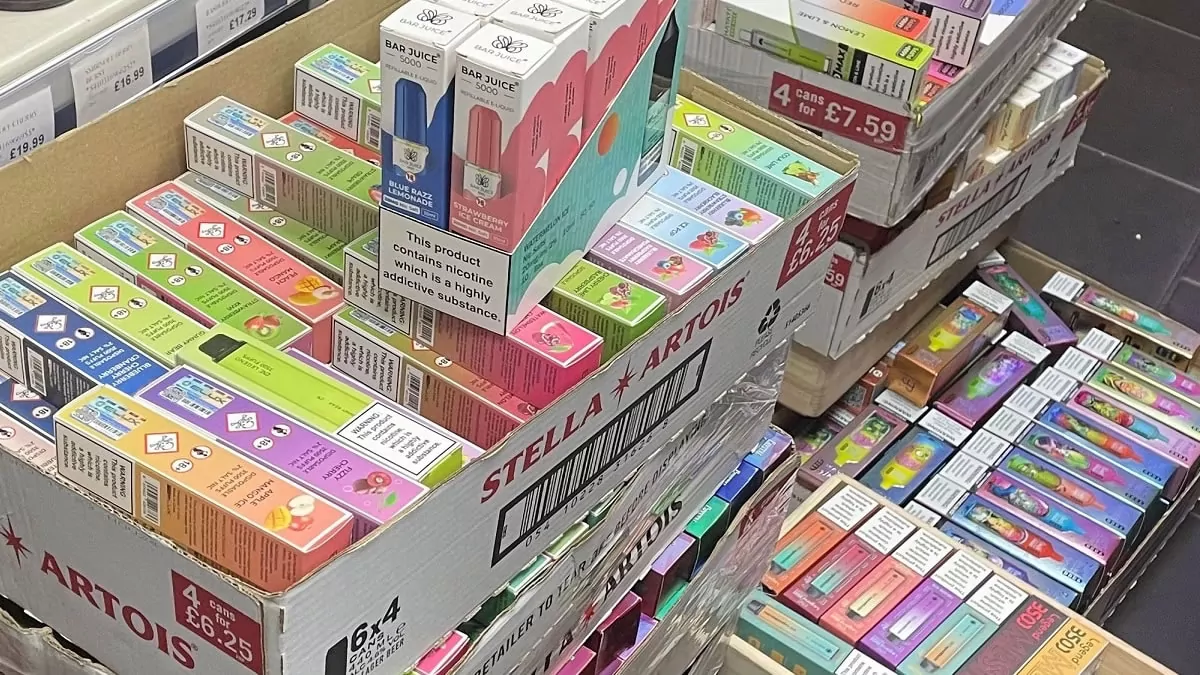
As of the mid-2020s, vaping is thoroughly ingrained in the cultural fabric – in movies, music videos, on social media, and in the hands of influencers and icons. Its on-screen roles range from casual background flavor to key character traits. Research and commentary continue to question how these portrayals shape public perception. Does seeing a beloved singer or a Netflix hero vape make young fans more likely to try it? Public health experts say yes, and urge responsibility in media. On the other hand, the normalization in pop culture has arguably helped millions of adult smokers feel comfortable switching to vaping, viewing it as a “lifestyle statement” aligned with wellness trends. The timeline of vaping in pop culture is thus a story of normalization: from niche to ubiquitous. As one medical journal noted, everyday social media posts and popular figures have collectively made vaping appear as “a normal and accepted aspect of daily life” for today’s youth. And indeed, one can hardly watch a music video, scroll a feed, or catch a TV drama these days without a wisp of vanilla-scented vapor drifting by. The coming years will reveal whether pop culture continues to embrace this image or starts to pivot, but for now, the thick cloud of vaping’s influence shows no sign of dissipating.
Read more:
A Brief History of Vaping
Key Takeaway: Vaping’s evolution in pop culture – from early cameos by movie characters and late-night TV demonstrations, through a phase of glamorization by celebrities and influencers, to a more conflicted portrayal today – reflects broader societal attitudes. It rode the wave of aesthetic appeal and social identity formation, being sold as a cleaner, cooler lifestyle. Yet as its prevalence sparked concerns, that very same pop culture had to reckon with the health messaging and influence it was putting out. Across the globe, whether celebrated or censured, vaping has undeniably become a part of the cultural zeitgeist of the 2010s and 2020s, marking a significant shift in how we depict and perceive nicotine use in the modern age.
- Malaysia Negeri Sembilan Backs Vape Ban, Awaits Clear Laws - August 5, 2025
- Is It Illegal to Vape or Smoke While Driving in Massachusetts? - August 5, 2025
- Austria Plans to Ban Disposable E-Cigarettes - August 5, 2025

